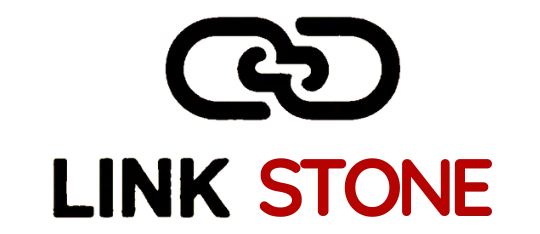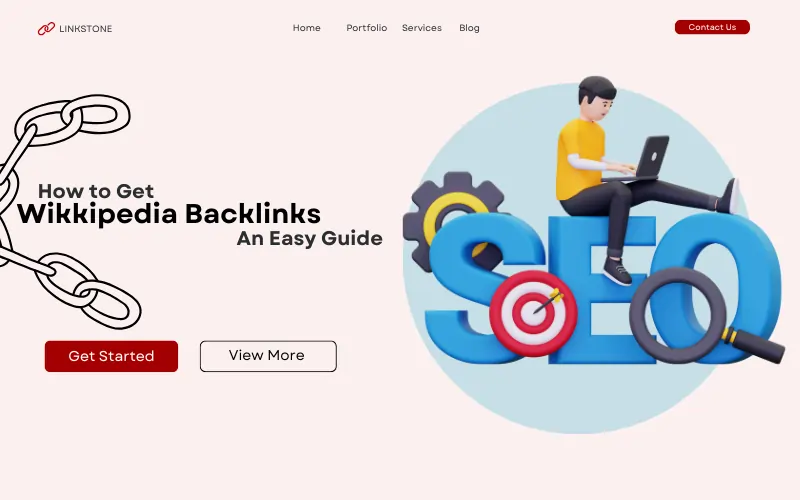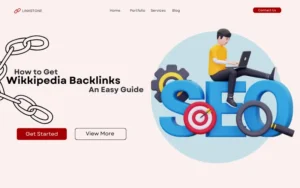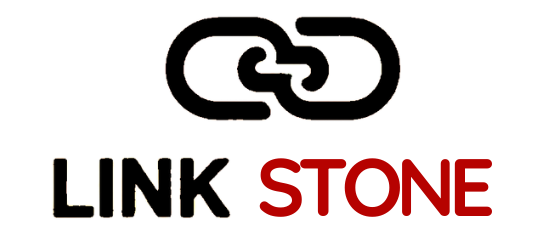When it comes to building online authority, very few backlinks carry the same weight and credibility as one from Wikipedia, the world’s most trusted information source. A mention or citation from Wikipedia isn’t just another link; it’s a public validation of your brand’s reliability and expertise.
While every Wikipedia backlink is no-follow, the real value lies beyond link juice. These links send powerful trust and credibility signals to Google and other search engines, indicating that your website is a credible source of factual, verifiable information. Over time, this enhances your domain authority, strengthens your entity recognition, and positions your brand as an authoritative voice within your niche.
In this comprehensive guide, we’ll break down exactly how to earn a Wikipedia backlink the right way without resorting to spam, paid edits, or manipulative tactics. Instead, you’ll learn how to build genuine credibility through ethical, white-hat outreach that naturally fits within Wikipedia’s editorial standards. By the end, you’ll understand how to use Wikipedia not just as a backlink source, but as a long-term trust amplifier for your website’s SEO and brand reputation.
Why Wikipedia Backlinks Matter
Wikipedia is among the most trusted sources on the web.
When your website is cited there, Google sees it as a validation of authority, an indirect ranking signal that can positively influence your SEO performance.
No-Follow, But Still Trusted
Yes, Wikipedia backlinks are no-follow, which means they don’t directly pass PageRank.
However, Google’s algorithm still interprets them as signals of credibility. A citation from such a reputable source informs Google that your content is fact-based and valuable, thereby improving your site’s perceived authority.
Referral Traffic and Brand Visibility
Wikipedia receives billions of visits every month.
If your link appears on a relevant page, for example, a topic related to your niche, you can attract high-quality referral traffic. Readers who click through are genuinely interested, which often leads to longer session durations and improved engagement metrics.
Is It Worth the Effort?
In a world full of paid links and low-quality placements, Wikipedia backlinks are rare and trustworthy.
They’re not easy to earn, but that’s exactly what makes them powerful. Each link acts as a “trust badge” that enhances your brand’s online reputation and reinforces your E-E-A-T signals: Experience, Expertise, Authority, and Trust.
Step-by-Step: How to Get a Wikipedia Backlink
Follow these proven steps to earn a legitimate, lasting citation from Wikipedia.
Step 1: Create and Warm Up Your Wikipedia Account
Start by creating a proper account avoid using promotional usernames like “SEOPro123.”
Instead, use something neutral and professional.
Once registered, confirm your email and spend a few days making small, helpful edits. Fix typos, update outdated facts, or add missing citations from credible sources.
These early contributions help establish your reputation as a genuine editor, not a spammer.
Step 2: Find Relevant Wikipedia Articles
Use Google search operators to find opportunities:
site:wikipedia.org “citation needed” [your topic]
site:wikipedia.org “dead link” [your topic]
For example, if your niche is digital marketing or food, search for “citation needed” SEO techniques or “dead link” marketing trends.
Pages with these tags are ideal because editors are already looking for sources your article could fill that gap.
Step 3: Verify the Quality of Your Source
Wikipedia editors are strict about external sources.
Make sure your article genuinely supports the statement you’re referencing.
Match the Context
If the page says “backlinks improve website authority,” your article must include a credible explanation or statistic to prove it. Never shoehorn irrelevant content; irrelevant citations get removed quickly.
Check Domain Strength
Wikipedia prefers high-authority, non-promotional websites.
Ensure your source site has good Domain Authority, a clean backlink profile, and a proper editorial tone. You can verify DA using free tools like Moz or Ahrefs.
Step 4: Edit the Article and Add Your Reference
Before inserting your link, improve the page first by fixing grammar, formatting, or factual inconsistencies.
Once the page adds real value, add your citation in the References section using Wikipedia’s proper format:
<ref>{{cite web |title=The Importance of Wikipedia Backlinks |url=https://linkstone.org/how-to-get-wikipedia-backlinks |access-date=2025-10-04}}</ref>
Test the edit in your sandbox first to ensure formatting is correct.
Never add promotional text; stay completely neutral and factual.
Step 5: Monitor and Maintain Your Edits
After publishing, keep an eye on your edits.
Wikipedia is a living, community-managed platform where other editors can remove or modify citations.
Check your edit history regularly and set watch alerts.
If your link is questioned, respond politely on the Talk Page, explaining how your article supports the statement with verified facts.
Maintaining transparency builds trust with the editing community and helps your link stay live longer.
Best Practices to Stay Compliant
Wikipedia has zero tolerance for spam or undisclosed promotion.
Follow these rules to avoid getting banned:
- Stay neutral: never praise your own brand.
- Contribute regularly: by making small, meaningful edits outside your own interest area.
- Avoid bulk edits: one link at a time, with credible justification.
- Never pay for Wikipedia links: it’s a clear violation of their terms.
Remember: the goal isn’t just one backlink, it’s reputation building through valuable contributions.
Mini Case Study: Replacing a Dead Link
A Linkstone client in the digital marketing niche noticed a dead citation on a Wikipedia page about “SEO link building.”
We verified the old source using Archive.org, matched the context with a fresh, informative blog post, and submitted the edit.
Result:
- The link stayed live for over 10 months.
- The client gained referral traffic averaging 100+ visits per month.
- The post earned 3 new natural backlinks from other blogs referencing the Wikipedia page.
This proves the power of doing it the right way; real value always lasts.
FAQs About Wikipedia Backlinks
Q1: Are Wikipedia backlinks do-follow or no-follow?
All backlinks on Wikipedia are nofollow by default. This means they don’t directly pass PageRank like do-follow links. However, that doesn’t make them useless. A Wikipedia link acts as a high-authority trust signal.
Q2: Can I add my website link anywhere on Wikipedia?
No, you can’t just place your link randomly. Wikipedia has strict editorial policies. Every link you add must be contextually relevant, factually accurate, and properly cited from a reliable source. Editors monitor every change, and irrelevant or self-promotional links are usually removed within hours.
Q3: What should I do if my Wikipedia link gets removed?
If your link is deleted, don’t panic. Go to the “View History” and “Talk Page” of that article to understand why the edit was reverted. Sometimes editors remove links due to formatting errors, citation style, or perceived bias, not necessarily because your source is bad. You can politely explain your reasoning, make improvements to the surrounding content, and then re-add your link with better context and citation formatting.
Q4: Is it safe to buy Wikipedia backlinks from sellers or marketplaces?
Absolutely not. Buying or selling Wikipedia backlinks directly violates the platform’s community and editorial guidelines. Paid link schemes not only risk getting your link or page permanently banned but can also damage your domain’s reputation in Google’s eyes. Instead of purchasing them, focus on earning citations by naturally creating authoritative, data-backed, or research-rich content that other editors will find worth citing.
Final Thoughts
Earning a Wikipedia backlink isn’t about finding loopholes; it’s about proving your credibility within your niche. Wikipedia thrives on accuracy, reliability, and transparency, so the only sustainable way to secure a citation from it is by contributing genuine value to its readers. When your content is truly informative, data-driven, and relevant, editors are far more likely to recognise it as a legitimate reference source.
A well-earned Wikipedia backlink can become a powerful trust signal for your domain. Even though these links are no-follow, they strengthen your site’s authority profile, help Google’s algorithm understand your brand as a verified entity, and attract organic referral traffic from highly engaged readers. Over time, this kind of credibility compounds, boosting your overall visibility and trustworthiness across the web.
At Linkstone, we focus on exactly these kinds of sustainable link-building strategies. Instead of chasing manipulative link schemes or spammy tactics, our approach revolves around earning editorial placements, building brand trust, and creating real digital assets that continue to deliver SEO value long after the link is placed.
If you’re serious about long-term growth, invest your time and resources in ethical, high-authority backlinks like Wikipedia citations. It’s slower, yes, but it’s the kind of growth that lasts. Once your brand is recognised as a credible reference, the benefits extend far beyond rankings into stronger brand reputation, improved topical authority, and lasting online trust.






